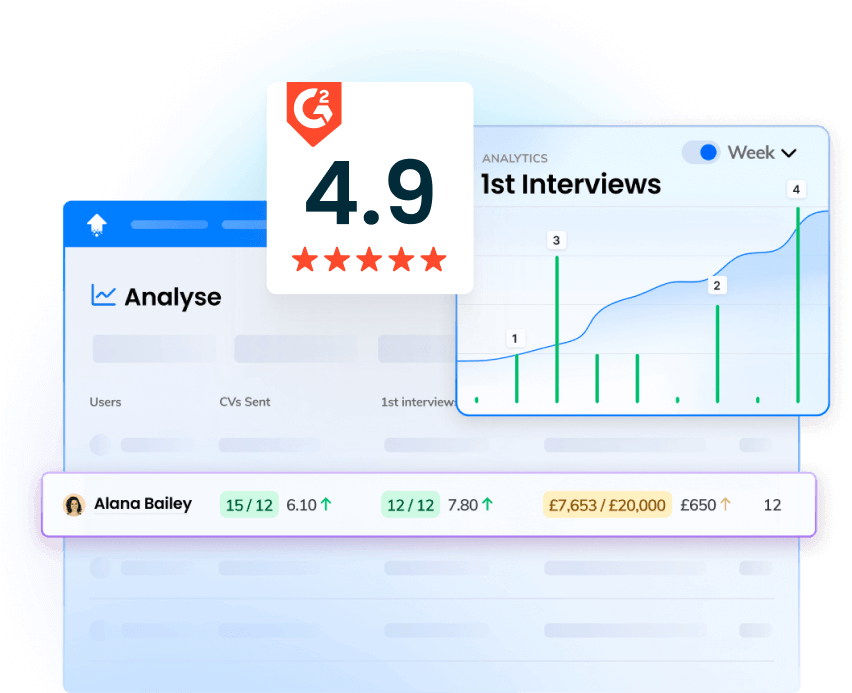It’s ironic, really. Recruitment companies need their own services more than any other industry sector. In the UK, annual staff turnover averages out at 15%. By contrast, the recruitment sector loses 43% of its employees every year. Even call centres only lose 16% of their employees annually.
You don't need to be a genius to see that these are not good stats for the recruitment sector - in fact, they're terrible. With such high staff turnover, recruitment agencies are losing valuable talent and probably valuable clients with them, hampering their long-term successes. So how can you work to reduce staff turnover in your team? Let's take a closer look.
Only 57% of recruiters stay in one company for nine months or more, and each replacement comes with heavy costs. The average cost in the UK to replace an employee is £12,000. It’s not just the price of recruitment though - training costs and loss of productivity also add up. And that’s before you get on to indirect costs, such as the impact on business relationships and team morale.
There’s been lots of discussion as to why the recruitment sector has such a high turnover. Are recruiters overselling the prospects of a glamorous and high-paid lifestyle? Are candidates expecting a less sales-oriented environment? Maybe it simply takes a special type of character to deal with the high levels of rejection.
Ready for mission “reduce staff turnover”? Let’s get started:
Start right

Glassdoor lets you see common interview questions for recruitment consultant roles. It’s got all the classics that you’d expect: why recruitment, why us, why now? Questions that rely on the candidate to know what working in the role will be like.
What if you turned the tables? Think taster days, particularly if uni grads are a key talent source for you. Think social media content – a day in the life and so on. Addressing this issue head-on would require bravery. After all, recruitment is competitive. Handled right, it could make for one hell of a campaign.
All on-board

Strong onboarding processes improve staff retention by 82%. This translates to making a good first impression and following it up with clear goals and support. If new recruits feel that they are in a positive, organised and supportive environment from day one, they are much more likely to stay for the long run than if they enter a chaotic workplace where no one has the time or takes the time to welcome them and help them settle in.
For some tips on improving your onboarding process, check out our recent blog post on how to get onboarding right.
It undoubtedly helps to have thick skin to work in recruitment. Is it nature or nurture? Many companies are now making resilience part of their soft skills training. Why not consider adding it to your programme?
Think rewards

Recruitment is a tough gig, no question. Talk to your team about how to inject positivity into the day-to-day. A bit of fun at work never goes amiss – whether that’s deal celebrations, team games, recognition for a job well done or just a bit of a giggle.
Performance management platforms like OneUp help to achieve this through gamification and in-office visualisation, creating a positive, high-energy culture of recognition which increases motivation and engagement.
If you don’t already have a regular employee survey, it’s well worth the effort. The reassurance of anonymity means you get a heads-up on key employee concerns. And the time to act before people think of leaving.
Build support

Do employees leave companies or just their managers? The jury’s still out. It won’t hurt to make sure you’ve got the basics covered: goal setting, regular one-to-ones, performance reviews and so on. Then think one step further, whether that’s coaching or peer mentoring.
Integrating these support mechanisms into your organisation will further build a strong employer brand and a positive workplace culture that attracts and retains the best talent. Again, your current team is a great place to start this conversation.
Watch the data

Exit interviews can shed light on your turnover rate. Is the team member leaving to go to another recruitment company? Or are they leaving the industry as a whole? What are they willing to share about their reasons?
A mixture of quantitive and qualitative data can help you track progress over time. It will also help you to see how much goodwill is left at the end of the working relationship.
Conclusion
It's time to say no to turnover - (unless they're of the apple variety). We can't stop staff turnover altogether, but we can work to reduce it, by building a positive culture that encourages long-term retention. It's something that the entire recruitment industry as a whole needs to work on, and until we do, every other measure we take to increase productivity and performance will simply amount to pouring more water into a leaky bucket.
What would you do to reduce staff turnover? Let us know your ideas and thoughts.
OneUp Sales - building high performance sales teams by increasing productivity, retaining talent, and empowering management across your organisation. Learn more about our platform and explore what it could do for you.
Photo by Michael Jasmund and Neil Thomas on Unsplash

















